Old Cheviot's pathless mossy peak;
For there the Mountain Spirit still
Lingers around the lonely hill,
To guard his wizard grottoes hoar
Where Cimbrian sages dwelt of yore;
Or, shrouded in his robes of mist,
Ascends the mountain's shaggy breast,
To seize his fearful seat—upon
The elf-enchanted Hanging-Stone,
And count the kindred streams that stray
Through the broad regions of his sway:--
Fair sister streams, that wend afar
By rushy mead or rocky scaur,
Now hidden by the clustering brake,
Now lost amid the mountain lake,
Now clasping, with protective sweep,
Some mouldering castle's moated steep;
Till, issuing from the uplands brown,
Fair rolls each flood by tower and town;
The hills recede, and on the sight
Swell the bold rivers broad and bright.
In his notes to the poem, he describes the Hanging Stone as:
'... a lofty cliff near the western summit of Cheviot, so called from its impending position over a huge rocky chasm or recess, in the bosom of the mountain, known by the name of Hell's Hole. Out of this grim recess flows the pretty Northumbrian stream of College Water, which is here divided by only a narrow neck of ground from the sources of the river Beaumont. The Hanging Stone is surmounted by an ancient cairn; and, either from the shadowy remains of olden legends, or from the savage aspect of the scenery around it, is still regarded by the neighbouring peasantry with a certain degree of superstitious dread'.
The name is said to derive from the tale of a packman who was strangled when his pack of cloth slipped over the edge, tightening the rope around his neck. The same thing is said to have happened to a robber who was carrying off a stolen sheep, both man and sheep being hanged (The Denham Tracts: a collection of folklore, 1892)
Geologically, the rock is a hornfels, a metamorphic rock altered by the action of intrusive Cheviot granite on a sedimentary rock, especially shale.
James Logan Mack considered that the story regarding the naming of the outcrop was unlikely as it had been named since medieval times (as Hanging Shaw or Hanging Brae). Similar names from around the country usually arise from the nature of the outcrop, in this case, the central mass of fractured rock appearing to hang over the solid outcrop at the lower end.
"... the one which does not possess the title more readily resembles a Hanging Stone, than the one to which the appellation is usually given".

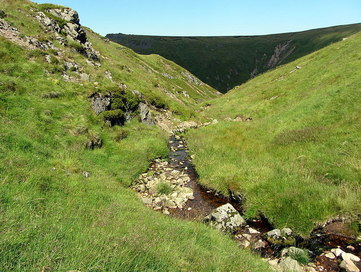
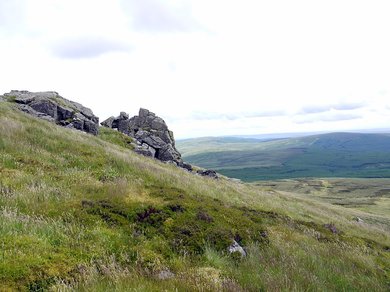
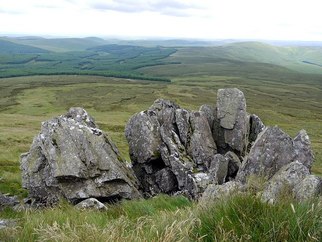
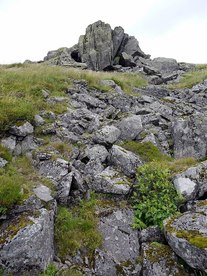
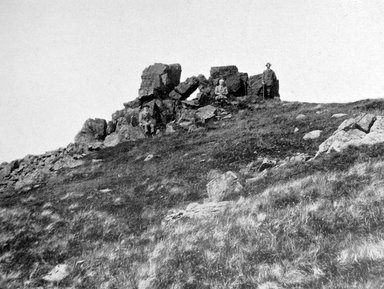
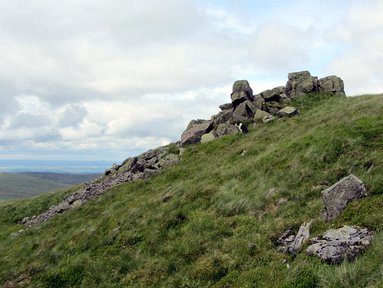
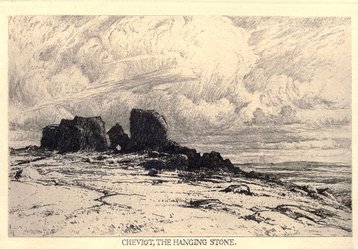
 RSS Feed
RSS Feed
